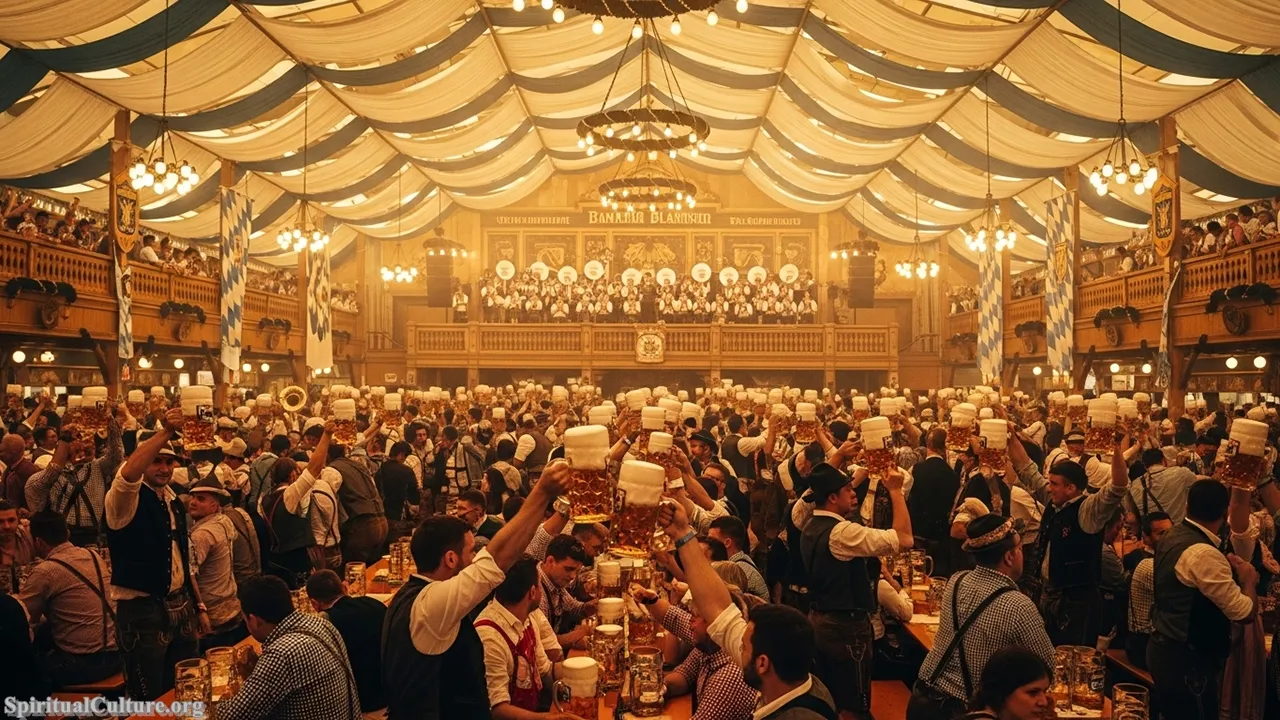From birth rituals to burial rites, from sacred songs to silent prayers, religion is not just a belief system — it is a cultural current that flows through the identity of individuals and civilizations. It colors language, art, law, dress, and even the shape of cities. In every corner of the globe, faith traditions offer not only a lens through which people view the world but also a mirror in which they see themselves and their communities.
Spiritual Culture invites you to journey across continents and centuries, to explore how religion has formed the soul of cultures — and continues to inspire, challenge, and unite humanity today. This article uncovers how deeply religion influences cultural identity, how it evolves, and why understanding this connection matters more than ever in our globalized age.
Religion as a Cultural Blueprint
The Roots of Identity
Religion often offers the foundational stories by which cultures understand their beginnings, their values, and their destiny. These narratives shape national myths, moral systems, and collective memory.
Myth and Meaning
In Hinduism, the Mahabharata and Ramayana provide moral guidance, heroic models, and cosmic insight. In Judaism, the Exodus narrative shapes Jewish identity as a people delivered by divine covenant. In Christianity, the life and teachings of Jesus center the believer’s identity on grace, redemption, and community.
These stories are not simply told — they are lived, year after year, through rituals, holidays, and festivals. They shape how people see themselves in the arc of time and the landscape of the sacred.
Cultural Continuity Through Ritual
Rituals rooted in religion mark key stages of life: birth, coming of age, marriage, and death. These rites of passage carry deep cultural meaning and create shared experiences that bind communities.
For example, the Islamic practice of circumcision or the Christian sacrament of baptism reflects both religious obedience and cultural belonging. These rituals preserve identity even in diaspora, reminding people who they are and where they come from.
Faith Embodied in Daily Life
Language and Expression
Religion has a profound influence on language. Sacred texts shape vocabulary, metaphors, and even the rhythm of speech.
- The King James Bible has shaped English idioms like “by the skin of your teeth” and “a thorn in the flesh.”
- Arabic is infused with Quranic phrases, often used in greetings, gratitude, or praise.
- Sanskrit mantras influence how spiritual concepts are spoken and understood across India and the diaspora.
Language becomes more than a means of communication — it is a vessel for faith and identity.
Dress and Appearance
Clothing shaped by religion often symbolizes modesty, spiritual commitment, or cultural heritage.
- The Sikh turban (dastār) is a sign of faith, courage, and identity.
- The Jewish kippah reminds the wearer of God’s presence.
- Muslim women’s hijab is both a spiritual expression and, for many, a cultural emblem.
Such attire may invite curiosity or controversy, especially in secular societies, but for the faithful, it is often a cherished mark of belonging.
Religion and National Identity
Faith and Founding Stories
Many nations were born from religious movements or bear marks of a dominant faith. Consider:
- Greece and Orthodoxy: The Greek Orthodox Church is intertwined with Greek national identity, language, and resilience under Ottoman rule.
- India and Hinduism: Hindu values influence national festivals, legal customs, and even political discourse.
- The United States and Protestantism: The idea of a “city upon a hill,” drawn from Puritan preaching, shaped American self-understanding as a chosen, moral nation.
Religion helps nations define themselves — and sometimes distinguish themselves from others.
Sacred Geography
Pilgrimage sites often become cultural landmarks:
- Mecca for Muslims.
- Jerusalem for Jews, Christians, and Muslims alike.
- Varanasi on the Ganges for Hindus.
- Lumbini, the birthplace of the Buddha.
These places not only attract the faithful but become woven into national history, tourism, and identity.
Religion in Diaspora: Keeping Culture Alive
Carrying the Sacred Across Borders
Immigrants often bring their religion as a portable homeland. A church, mosque, or temple abroad becomes more than a place of worship — it’s a cultural center, a language school, a home.
For example:
- Filipino Catholicism thrives in North America through devotional processions and festivals.
- South Indian temples in the U.S. are architectural recreations of ancient styles, echoing identity across oceans.
- Jewish synagogues preserve language, cuisine, and collective memory in every continent.
Adapting Faith to New Soil
While some traditions are fiercely preserved, others evolve in diaspora:
- African spirituality merges with Christianity in the Americas (e.g., Santería, Vodou).
- Buddhist temples in Western cities offer meditation classes to non-Asian attendees.
- Islamic fashion blends modesty with global fashion trends among second-generation Muslims.
Religion is not a static artifact — it is a living, breathing expression of cultural negotiation and adaptation.
When Faith Divides and When It Heals
Cultural Clashes and Religious Conflict
While religion can unify, it can also draw lines. Throughout history, we’ve seen:
- The Crusades and Islamic conquests.
- Hindu-Muslim tensions in South Asia.
- Sectarian violence between Sunni and Shia Muslims.
- Christian denominational splits that reflect ethnic or regional divisions.
Religious identity, when rigid, can turn into exclusion. Cultural pride may become cultural superiority. But religion also offers pathways to peace.
Interfaith Movements and Shared Humanity
Interfaith dialogue is growing in cities and campuses across the world. Sacred teachings often call for compassion across lines:
- “Love your neighbor as yourself” — Jesus (Matthew 22:39)
- “The entire world is one family” — Mahā Upaniṣad
- “There is no compulsion in religion” — Quran 2:256
These teachings remind us: cultural identity shaped by religion need not lead to division. It can foster mutual respect and a deeper sense of shared human dignity.
The Role of Religion in Cultural Revival
Reclaiming Roots
In many indigenous communities, religious practices are being revived to reclaim cultural heritage lost to colonization or forced assimilation:
- Native American tribes are restoring spiritual ceremonies as acts of resistance and healing.
- Aboriginal Australians are reconnecting Dreamtime stories to reclaim land and identity.
- African spiritual traditions once suppressed are celebrated in festivals, music, and academic discourse.
Spiritual revival becomes cultural resurrection.
Youth Movements and Sacred Rediscovery
Young people worldwide are reclaiming religion on their own terms:
- Yoga in the West, once stripped of its Hindu roots, is now being recontextualized with spiritual meaning.
- Muslim youth are reshaping mosque culture through art, activism, and inclusion.
- Young Jews are reviving Shabbat as a digital detox and soul ritual.
In this, religion is not only inherited but reimagined.
Reflect and Reimagine
Religion is not simply a private affair of belief — it is a cultural force, a communal identity, a historical memory, and a spiritual map. Across the world, it continues to shape how people speak, dress, celebrate, mourn, and dream.
In our interconnected age, understanding how religion forms cultural identity invites us to approach one another with more empathy and curiosity. To honor sacred difference, and discover shared human longing beneath it.
Spiritual Culture invites you: Reflect on your own story. What has shaped your cultural identity? Where does the sacred live in your life — and in the lives of others?
Let faith be not a wall, but a window. Not a weapon, but a wellspring of compassion.





